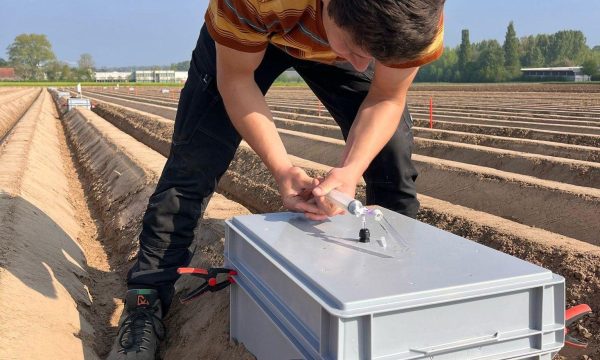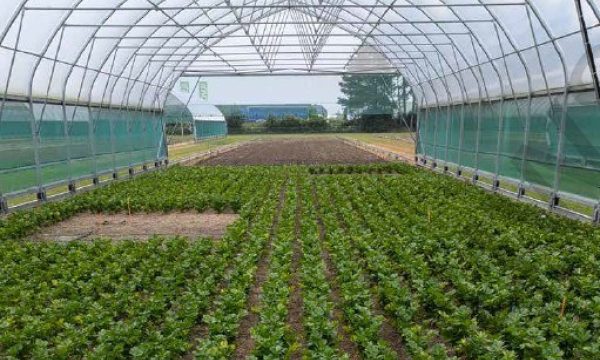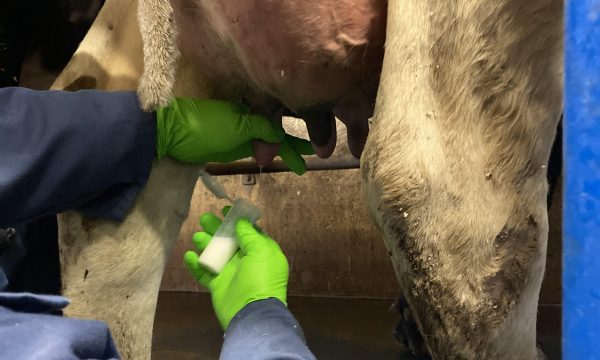Press release Risk of spreading antibiotic resistance through outdoor vegetables? NONE!

Are humans exposed to antibiotic residues and, more importantly, does the consumption of vegetables from open field increase the risk of antibiotic resistance? A preliminary study indicates a quasi-zero to negligible risk. In leeks, doctoral student Judith Huygens (ILVO, UGent) found no resistance genes and only a few antibiotic residues, in very low concentrations.
Looking for routes of spread
To stop antibiotic resistance in pathogenic bacteria, it is important for scientists to identify all possible routes of spread of antibiotic resistance and residues to humans, animals and the environment. Earlier research, on the possible spread route through animal products such as meat, has already led to more precise guidelines on animal antibiotic use in the period before slaughter. The so-called "environmental route" by which antibiotic resistance and residues from animal manure would potentially show up in soil, water and ultimately in crops has so far been less studied.
Concerns about increasing antibiotic resistance in bacteria has been described widely. Infections are becoming increasingly difficult to control with an antibiotic. In 2019, there were an estimated 1.27 million deaths worldwide due to antibiotic resistance. Antibiotic-resistant bacteria in humans are mainly a result of human antibiotic use. Antibiotic use in animals can also have an impact.Today, scientists and policy are working with a global approach to reduce the selection and spread of antibiotic resistance: The so-called "One Health" approach considers the inextricable link between human health, animal health, food, crops and the environment. Judith Huygens' doctoral study fits into this approach.
More antibiotic residues and resistant bacteria in manure with higher antibiotic use? Yes
Much of the antibiotics administered to animals end up in manure, which in turn is used (in part) to fertilize fields. The more antibiotics are used, the more resistant germs and antibiotic residues can be found. For example, in the Belgian livestock industry, the largest amount of antibiotics is currently still used in the veal calf sector. So is there more antibiotic residue found in the manure of calves than of, say, beef cows? The answer is yes.
In all 9 samples of calf slurry, antibiotic residues were found that were high enough to select for antibiotic-resistant bacteria and pathogens. For the cattle slurry samples, this was the case in only 4 of the 25 samples and at much lower concentrations.
The E. coli bacteria found in slurry from fattening calves are also found to have antibiotic resistance remarkably more often than in the E. coli in the barnyard manure of beef cows.
Only 12% of E. coli bacteria from calf manure were free of antibiotic resistances, while this was the case for 77% of E. coli bacteria in cattle manure. Moreover, 75% of E. coli bacteria from calf manure were multi-resistant. In barn manure from beef cows, this was only 9%.
Does antibiotic spread to soil via manure? Yes. Does it cause resistance in bacteria? Probably not.
Are the antibiotic residues present in manure also found in soil? Yes, two to three weeks after fertilization, Judith Huygens found in samples from different depths some of the residues she also found in the manure used. It was also remarkable that certain antibiotics, known to be very persistent in the environment (flumequine), were found in the soil even before it had been fertilized in the experiment. Perhaps these were antibiotic residues caused by previous fertilization.
We found little evidence that the presence of antibiotic residues is the cause of resistance selection in soil bacteria. More research on this topic is needed to make an unequivocal statement.
Does it spread further to the crop? Initial research finds little evidence.
To investigate whether antibiotic residues can actually spread to crops via the manure and soil route and what that means for resistance selection in bacteria, Judith Huygens set up an experiment with leeks. 'Leeks are a common outdoor crop in our region and unlike other vegetables, animal manure is often spread on leek fields.' The leeks in the experiment were fertilized with slurry. On the defined zones in the experimental leek field, either manure without, or manure with the addition of antibiotics was spread. 'We chose 3 different types of antibiotics, namely doxycycline, sulfadiazine and lincomycin. All three had been commonly found in animal manure and soil samples during the scanning phase of the PhD. The result of the experiment?
We found neither antibiotic residues nor resistance genes in the harvested leeks. We also saw no shift in antibiotic resistance among the bacteria present.
In addition, Judith Huygens screened about a hundred leek samples at the auction for the presence of 56 different antibiotic residues. Antibiotic residues were detected in only 10% of the samples and at very low concentrations.
We can conclude from these studies that leeks pose no to negligible risk of transmission of antibiotic resistance or residues to consumers. Other vegetables and growing conditions should be investigated in the future to arrive at a more global picture.


